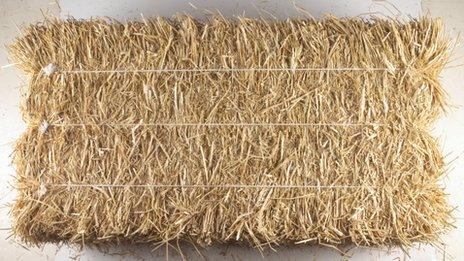Buried diggers and knighted meat: Stubborn urban legends
- Published

There are hundreds of diggers buried below London and it's legal to shoot a Welshman in Hereford. These are among the rumours that resurface occasionally across England and seem to have extraordinary sticking-power. But for all their tenacity - they're not true. BBC News looks at some of the stories that have become legend.

Arise, Sir Loin
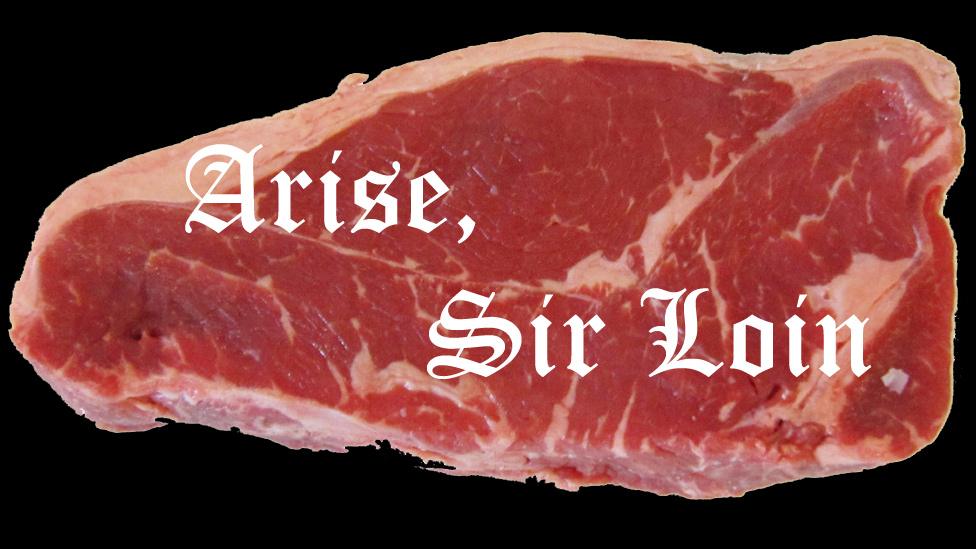
The knighting of a tasty piece of meat, thus giving it the name "Sir Loin" has been variously ascribed to Charles II, Elizabeth I and James I.
The story regarding James I is still honoured in Lancashire, external, where it's said during a meal in 1617 at Hoghton Tower near Preston, the monarch was overcome by a succulent steak and gravely made it a knight of the realm.
It is true that the tower was playing host to the king as he and his retinue made their way back to London from Scotland - and who knows, he may have jestingly touched his sword to the chunk of beef.
But while it is possible the monarch enjoyed a pun, the word "sirloin" first appeared in English as far back as the early 16th Century and therefore pre-dates the reign of James.
In English, the cut of meat was originally spelled "surloyn" or "surloine", according to etymologists, and it is most likely the name came from the French words "sur", meaning "over" or "above", and "longe" meaning "loin".

Diggers deep under London
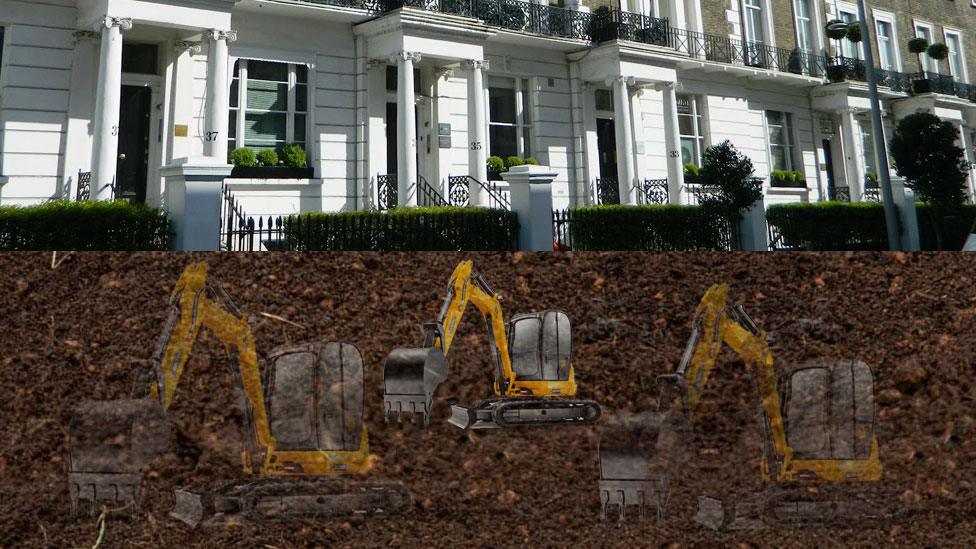
Various news outlets, including the New Statesman, external, Daily Telegraph, external and ITV , externalreported rich people who excavated under their houses to fit in swimming pools and home cinemas found it more economical to abandon diggers below ground rather than take them back up to street level.
But Dan Williams from Williams' Basements, says the idea is "utterly ludicrous".
"Of course we always have an exit strategy," he says.
"Not only are [diggers] expensive bits of kit, but they take up a fair bit of room. When you consider the price of property and land in London, it doesn't make any sense to dump them in a valuable space and cover them in concrete."

Where to pinch a pooch

Police in Whitby, North Yorkshire, were contacted by worried pet-owners who had heard small red and yellow stickers were being put on car tyres outside homes where valuable dogs lived.
And it would seem many cars had these little stickers on.
The police enlisted the advice of a tyre fitter to prove that marks left on vehicle tyres were not the work of dog-nappers.
It turned out that rather than indicating the best place to make off with man's best friend, red dots denoted the heaviest part of a tyre and a yellow dot the lightest.
The stickers had been on car tyres since they were last tested but householders only started noticing them once they were pointed out - a frequency illusion called the Baader-Meinhof phenomenon.
Psychologists explain it's because the human mind is biased towards things it's recently learned - if we learn something new, we are more likely to pay attention to it when we encounter it again shortly afterwards.
A similar, related theory says humans are generally biased against information we do not know, so it's after we learn a piece of information we more easily become aware of it.
On a separate note - a ploy used by some "psychics" uses the same phenomenon. If you're told seeing a white feather means a dead loved-one is watching over you, you'll spot them all over the place.
Try it and see.

The 'Da Pinchi Code'
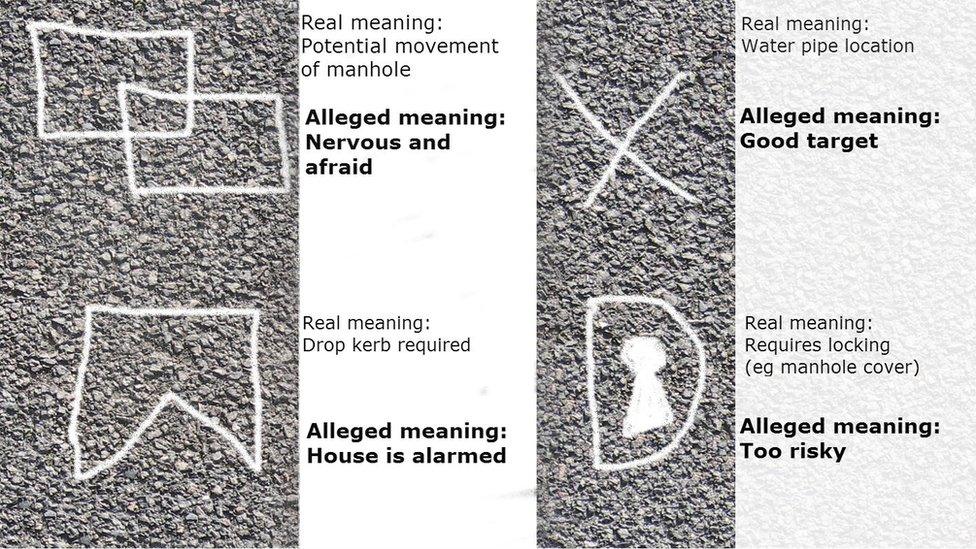
A series of symbols sprayed on to pavements outside homes have often spawned claims they're the work of burglars who've left a code to help fellow-criminals target vulnerable premises.
Similar to the scratchings made by Victorian tramps to highlight households where a cook would provide a good meal, overlapping squares were meant to indicate the homeowner was "nervous and afraid", while two diamonds chillingly suggested the occupant was "a vulnerable female".
The rumours weren't simply words on the street - even Warwickshire Police has fallen foul of the hoax, although near neighbours West Mercia Police were quick to scotch the myth in Worcestershire.
However - the symbols are actually ground works markings used by gas, electricity, water, cable and telecoms contractors.
Different paint or chalk colours have specific meanings that indicate whether there are live power lines, flammable material, water, drains or a proposed excavation route.

Killing Celts with longbows
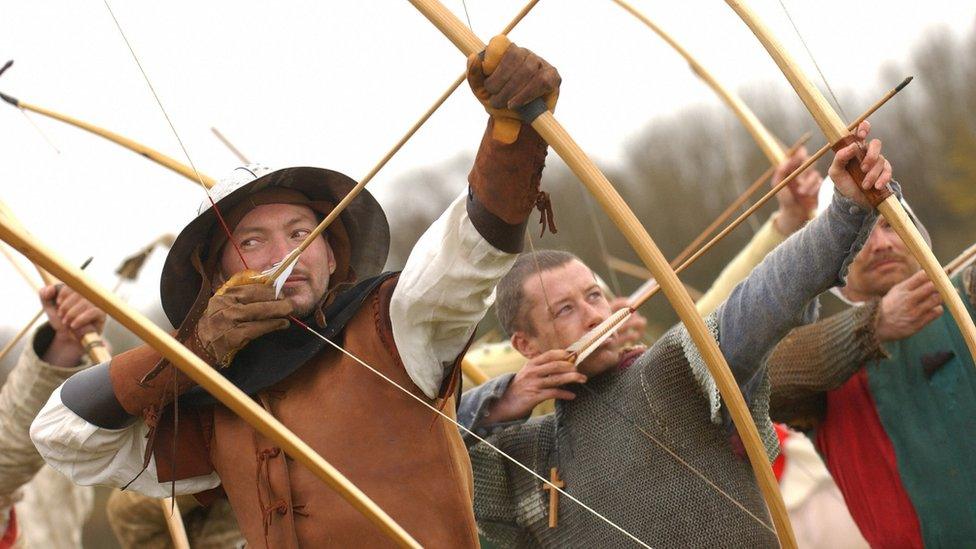
Are you within your rights to shoot a Welsh person with a longbow after midnight in Chester; or on a Sunday in the Cathedral Close in Hereford; or a Scots person within the city walls of York (other than on a Sunday)?
No. Of course you're not.
The myth about slaying Celts could have originated from a City Ordinance of 1403 passed in response to the Glyndŵr Rising, which imposed a curfew on the Welsh. Both Chester and Hereford were frequently under attack from Wales in the medieval period.
As for killing a Scot in York, a Mr Henry Shrimp submitted this Freedom of Information request, external to York City Council in 2012:
"In York, excluding Sundays, it is perfectly legal to shoot a Scotsman with a bow and arrow. As such, please tell me the number of Scots who have been shot in the last ten years by those taking advantage of this law."
In response, the council replied:
After an extensive search of our records I can confirm that there are no records of any Scotsmen being legally shot with a bow and arrow in the last ten years. There is however a vague recollection of an alleged occurrence several centuries ago which involved a group of men from the Nottingham area, dressed in green, who were enjoying a stag night in York.
Regardless of any ancient legislation, the Law Commission said: "It is illegal to shoot a Welsh or Scottish (or any other) person regardless of the day, location or choice of weaponry."
Murder and manslaughter laws, as well as the universal right to life under the Human Rights Act, would trump any ancient code. Obviously.

Watch it on the radio
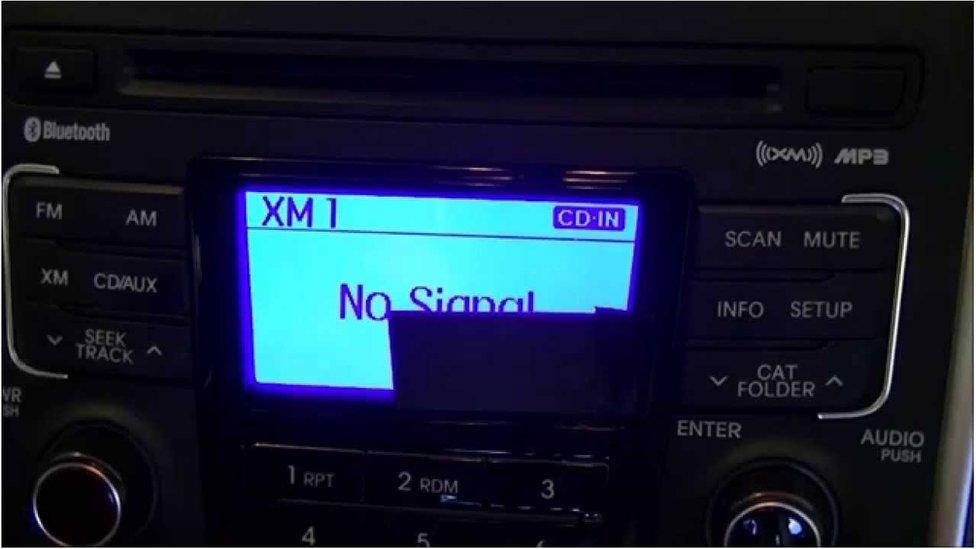
Thieves in places including Cheshire, Coventry, London and Cardiff embarked on a crime wave of stealing car radios in the mistaken belief they could pick up satellite television channels, external.
The rumour started when Ford stated some 2006-07 Focus models would feature SIRIUS Satellite radio as a factory-installed option.
It was thought a misunderstanding occurred because Sky Digital picked up digital radio, then the chip must also pick up digital television.
In January 2007, Ch Supt Sultan Taylor from the Metropolitan Police said: "We have had a big increase in the number of Ford vehicles broken into and we are sure it is because local thieves have got wind of this ridiculous notion that they can get satellite TV from car radio chips."
Det Insp Nick Wallen from West Yorkshire Police reiterated his colleague's point, telling thieves their "pointless actions" would result in prosecution.
- Published18 January 2016
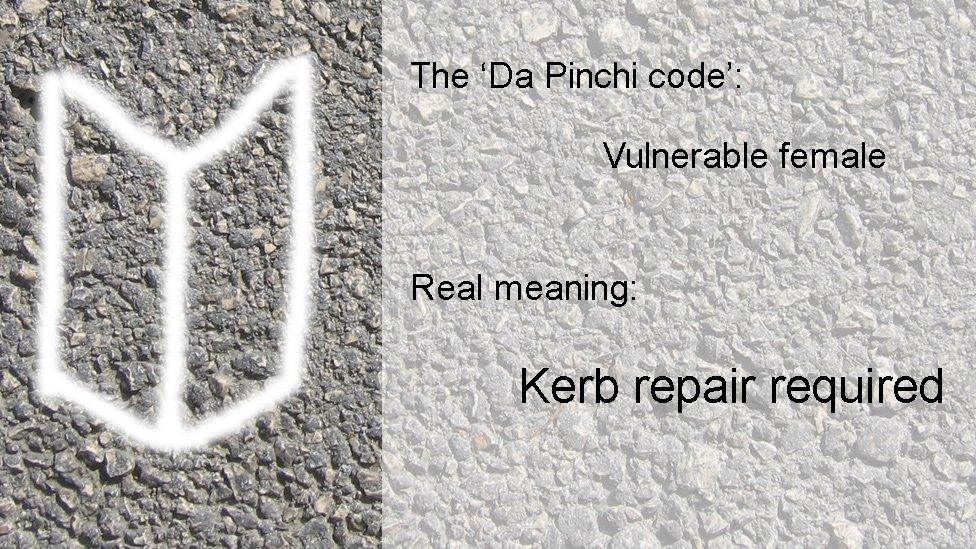
- Published6 April 2012
